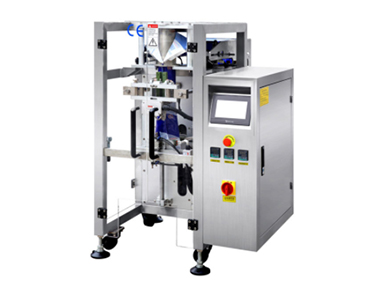To be a distributor
Ask a question
Make an enquiry
This blog explores VFFS Machines' six key design and set-up principles to help you identify the source of forming and sealing problems and develop solutions for quality packages.
Let’s start at the beginning. Problems occur most often when the product is:
• large in relation to bag size
• inconsistent in size or shape
• lightweight
• oddly shaped
• or with rough outer surfaces
Bottlenecks occur when product strings out as it moves from the inlet chute into the narrower confines of the forming tube. In extreme cases individual product “charges” can bridge together. These product flow issues slow down production speeds, create blockages, and cause leakers when product gets trapped in the seal.
On forming tubes with integral cones the product dose is slightly staggered, so it passes through the bottleneck faster and stays more compact.
Forming sets should be designed according to your product, package design, machinery, and film specifications. Make sure that this optimal design is accurately and consistently replicated when you order replacement parts or specify formers for multiple machines, lines, or locations.
Vertical FFS machine adjustments are also critical for producing quality packages. Misaligned film rollers prevent the film from making full contact with the forming collar, causing wrinkles, creases, and package distortions that reduce shelf appeal and cause seal problems.
Poor package quality is caused by film drive issues such as belt adjustment and forming tube alignment.
Wear or damage to the former lip or wing can also distort the package.
By fine-tuning your forming and filling operations you will improve both package appearance and seal quality.
Leakers
The end seals on packages produced by vertical baggers typically vary in thickness. Most have a lap or a fin seal, and some are designed with gussets. Unintended wrinkles or pleats may, at times, be unavoidable. Leakers, when they occur, often follow channels at the intersections between two and multiple layers of film and at the corners.
Sealing Jaws
Sealing jaws must transfer enough pressure and heat to seal across these channels without crushing, cutting, or distorting the end seal.
Pressure
In order to create uniform sealing pressure, the serration profile of your sealing jaws should be designed according to your package specifications, machinery, and running conditions.
Heat
Sealing jaw temperatures are often increased to improve seal quality, but this can create hot spots that overheat and distort the package.
Wear and Damage
Jaws that are worn, damaged, or contaminated with product also create inconsistent pressure and heat transfer that cause seal problems.
To learn more about forming and filling on Vertical FFS machines, contact HITEC.

Headquarter:
Manufacturing plant:

Become a Distributor
Learn how to become a representative of HiTec in your region / country

Ask a Question

Ask a Question

Get a price/Quote

DOWNLOAD FORM
